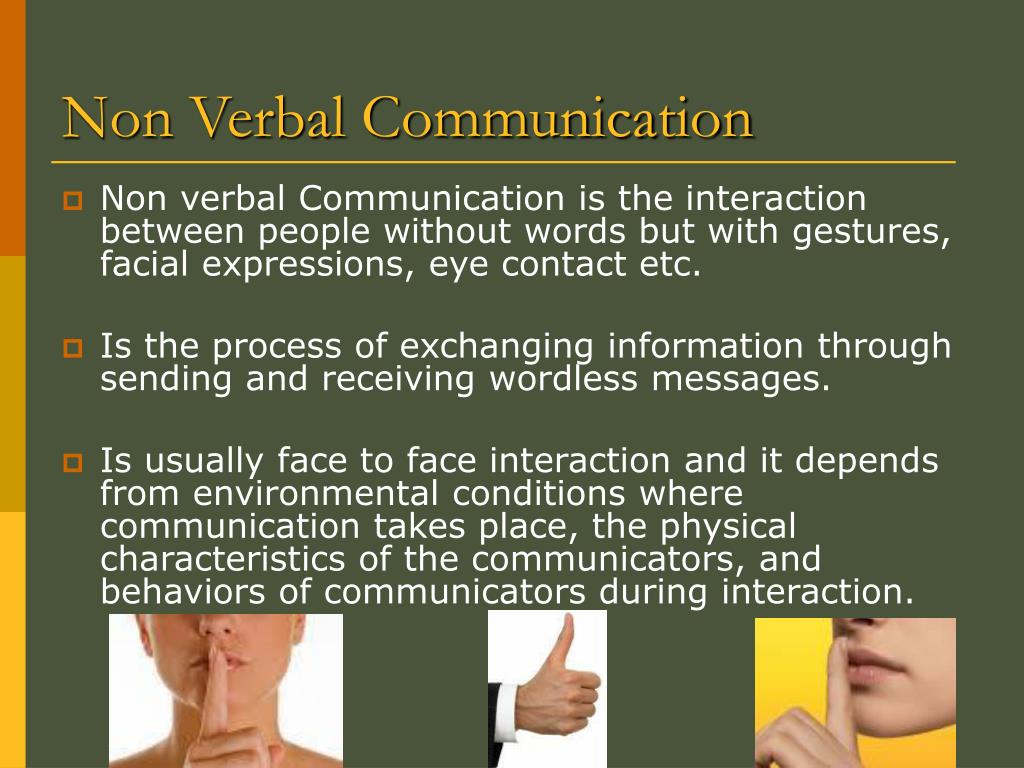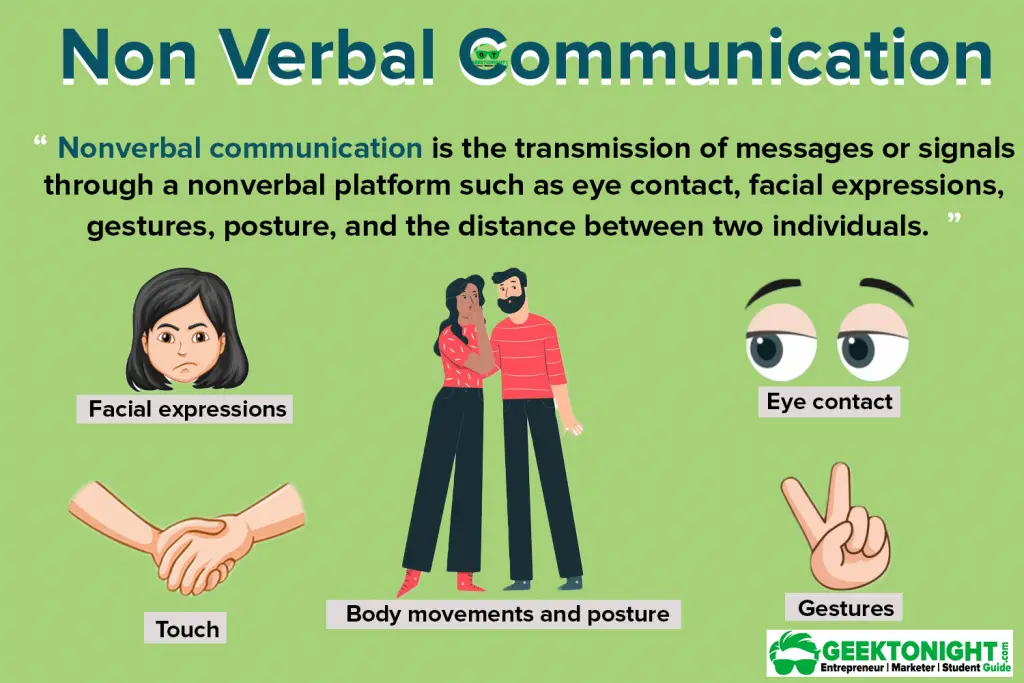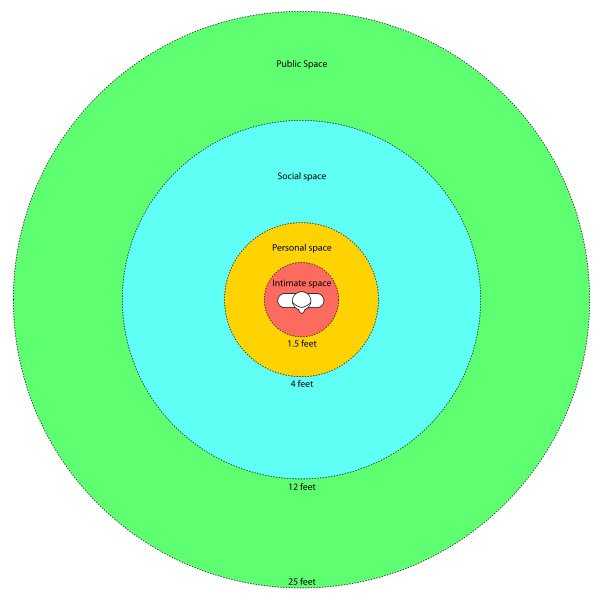Explain Non-verbal Communication Presentation
| Introduction to Non-verbal Communication | ||
|---|---|---|
| Non-verbal communication refers to the transfer of information through means other than spoken or written words. It includes facial expressions, body language, gestures, eye contact, touch, and posture. Non-verbal cues can complement, reinforce, contradict, or substitute verbal messages. | ||
| 1 | ||
| Importance of Non-verbal Communication | ||
|---|---|---|
| Non-verbal communication helps convey emotions, attitudes, and intentions. It enhances understanding and interpretation of verbal messages. It plays a significant role in building rapport, trust, and establishing connections with others. | ||
| 2 | ||
| Facial Expressions | ||
|---|---|---|
| Facial expressions are crucial in non-verbal communication. They can convey various emotions such as happiness, sadness, anger, surprise, and fear. Facial expressions are universal, but their interpretation may vary across cultures. | ||
| 3 | ||
| Body Language | ||
|---|---|---|
| Body language includes postures, gestures, and movements. It can express confidence, nervousness, interest, boredom, and more. Understanding body language can help interpret a person's true feelings or intentions. | ||
| 4 | ||
| Eye Contact | ||
|---|---|---|
| Eye contact is a powerful non-verbal cue. It can indicate attentiveness, respect, trust, or dishonesty. Eye contact varies across cultures, and its duration and intensity can convey different meanings. | ||
| 5 | ||
| Touch | ||
|---|---|---|
| Touch is a non-verbal form of communication used to convey emotions, support, or intimacy. It can vary from a firm handshake to a gentle pat on the back. The appropriateness of touch varies depending on cultural norms and the relationship between individuals. | ||
| 6 | ||
| Proxemics | ||
|---|---|---|
| Proxemics refers to the study of personal space and territoriality. Different cultures have different perceptions of personal space and appropriate distances between individuals. Violating someone's personal space can lead to discomfort or conflict. | ||
| 7 | ||
| Vocal Cues | ||
|---|---|---|
| Vocal cues include tone, pitch, volume, and pace of speech. They can convey emotions, attitudes, and intentions. Misalignment between verbal and vocal cues can lead to misunderstandings or confusion. | ||
| 8 | ||
| Appearance and Clothing | ||
|---|---|---|
| Appearance and clothing choices can convey personal style, cultural identity, and social status. It can influence first impressions and how others perceive an individual. Understanding cultural expectations regarding appearance and clothing is important in cross-cultural interactions. | ||
| 9 | ||
| Conclusion | ||
|---|---|---|
| Non-verbal communication is a powerful and essential aspect of human interaction. It complements and enhances verbal communication. Understanding and interpreting non-verbal cues can improve communication effectiveness and deepen connections with others. | ||
| 10 | ||
/what-is-nonverbal-communication-1691351_FINAL-f08a0b35c5a84fef9513cf92ed0eaf2c.png)


:max_bytes(150000):strip_icc()/illo_BodyLanguage-Posture-5984a3b99abed500102bc434.png)





